Chemotherapy
Chemotherapy uses cytotoxic drugs to destroy cancer. "Cytotoxic" means toxic for the cells. These drugs do not only alter the way in which cancer cells grow and divide, but they may also affect normal cells.
Chemoradiation
Chemoradiation means simultaneous administration of chemotherapy and radiotherapy instead of having a brief rest between one treatment and the other. This method is often used when the cancer is locally advanced.
Because the two treatments are administered at once, they cause more side effects, and patients who receive this combined approach must be well enough to cope with the side effects.
Small-cell lung cancer (SCLC)
Chemotherapy is the main treatment method for SCLC. Cancers that grow more quickly usually respond better to chemotherapy than to other treatments.
Chemotherapy can be given:
- at the same time as radiotherapy (called chemoradiation)
- after lung surgery—though this is rare—to lower the chances of the cancer returning
- to control the cancer, help you live longer, and to improve your symptoms
Non-small cell lung cancer (NSCLC)
Chemotherapy to treat non-small cell lung cancer can be given:
- before surgery or radiotherapy to attempt to reduce the size of the cancer
- after surgery or radiotherapy to lower the risk of the cancer returning (adjuvant chemotherapy).
- at the same time as radiotherapy (chemoradiation)
- to control the cancer, help you live longer, and to improve your symptoms
The drugs used
Usually, there is a combination of at least two drugs, though you can also receive treatment with just one drug. For both types of lung cancer, cisplatin or carboplatin are often given alongside one of these drugs:
- Etoposide
- Vinorelbine
- Gemcitabine
- Paclitaxel
- Docetaxel
- Pemetrexed
Other chemotherapy drugs can also be used.
If the cancer returns or the chemotherapy doesn't work well, it is common to have chemotherapy with different drugs.
If you have SCLC, your specialist may recommend a combination of one of the aforementioned drugs.
How is the chemotherapy administered?
Chemotherapy is usually given in the day hospital through an injection in a vein (intravenous) through:
- A fine, thin tube inserted into one of the veins in your hand or arm.
- A PICC line: a thin plastic tube placed in a vein on the interior part of your arm.
- A central line: a plastic tube placed in a vein in your chest.
Sometimes, chemotherapy is given in tablet form.
Chemotherapy is usually given during as part of a treatment session. After each session, you will normally have a period of rest lasting for a few weeks. This lets your body recover from the side effects.
The treatment and rest period make up one treatment cycle. Your specialist will talk to you about how many cycles you are going to have.
Sometimes, chemotherapy can be given continuously through a small portable pump connected to your line or PICC line. A controlled amount of medication is delivered to the blood stream over a period of time. This means you can take the pump home and spend less time in the hospital.










